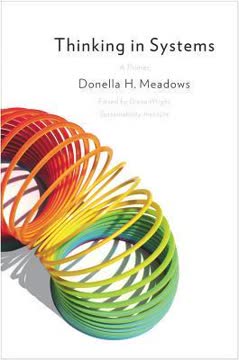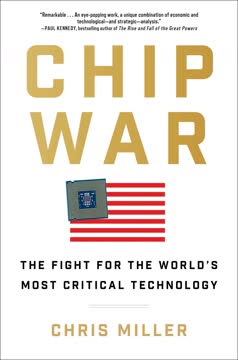つの重要なポイント
1. 循環型経済は2030年までに4.5兆ドルの機会を提供する
現在、私たちは地球の許容量の約1.75倍を消費しており、毎年再生される自然資源の75%以上を使用しています。
持続不可能な線形モデル。 現在の「取る-作る-捨てる」経済モデルは、有限の資源を驚くべき速さで枯渇させています。この線形アプローチは環境に破壊的であるだけでなく、長期的には経済的にも持続不可能です。
循環型への転換。 循環型経済は、経済成長を資源消費から切り離す魅力的な代替案を提供します。廃棄物を排除し、製品や材料を使用し続け、自然システムを再生することで、循環型モデルは巨大な経済的潜在力を持っています。
大きな機会。 アクセンチュアは、循環型経済の原則を採用することで、2030年までに4.5兆ドルの追加経済生産を生み出す可能性があると推定しています。これは、予測される世界のGDPの4-5%に相当します。これは、資源の生産、消費、管理の方法におけるパラダイムシフトを意味し、産業全体で革新、成長、競争優位性の新しい道を提供します。
2. 5つの循環型ビジネスモデルが線形から循環型への移行を推進する
廃棄物の再定義による価値の機会を捉えるために、循環型経済への転換を支える5つのビジネスモデルを紹介しました。
循環型入力: 再生可能、リサイクル可能、または高度にリサイクル可能な材料を使用して廃棄物と汚染を排除します。
シェアリングプラットフォーム: 共有所有権とアクセスを通じて製品の利用率を高めます。
サービスとしての製品: 製品のアクセスを提供し、所有権を保持して価値を維持および回収します。
製品使用延長: 修理、再製造、再販を通じて製品のライフサイクルを延ばします。
資源回収: 使用済み製品や廃棄物ストリームから貴重な材料を回収します。
これらのモデルは、個別または組み合わせて、廃棄物と非効率を最小限に抑える循環型アプローチに変換するのに役立ちます。これらのモデルを採用することで、企業は新しい価値を捉え、コストを削減し、リスクを軽減し、運営と提供の革新を推進できます。
3. 第四次産業革命の技術は循環性の重要な推進力である
第四次産業革命(4IR)の技術は、資源のスマートな使用を可能にし、循環型経済の新しい機会を創出します。
デジタル技術:
- 人工知能
- 機械学習
- クラウドコンピューティング
- モノのインターネット
- ブロックチェーン
物理的技術:
- 3Dプリンティング
- 高度なロボティクス
- 新素材
生物学的技術:
- 合成生物学
- 遺伝子工学
これらの技術は、効率性、革新、情報の透明性を高め、資源集約型材料への依存を減らします。新しい循環型ビジネスモデルを促進し、資源の使用を最適化し、製品ライフサイクル全体で材料の追跡と回収を可能にします。
これらの技術を組み合わせることで、循環性のためのさらに強力なソリューションを生み出す可能性があります。例えば、AIを搭載したロボットは、リサイクルのために製品を効率的に分類および分解でき、ブロックチェーンは循環型サプライチェーンの透明性と追跡可能性を確保します。
4. 産業は独自の廃棄物課題に合わせて循環型戦略を調整する必要がある
異なる産業は異なる種類の廃棄物に焦点を当てる必要があるかもしれません。
資源集約型産業(金属・鉱業、石油・ガス、製造業など)は以下を優先すべきです:
- 生産における資源の無駄を削減
- エネルギーと水の消費を最小限に抑える
- 資産の利用率を最大化して無駄な容量を削減
消費者向け産業(電子機器、ファッション、消費財など)は以下に焦点を当てるべきです:
- 製品ライフサイクルを延ばして早期廃棄を減らす
- 使用済み製品から貴重な材料を回収
- 回収およびリサイクルプログラムの実施
サービス指向産業(通信、金融サービスなど)は以下を通じて貢献できます:
- デジタルプラットフォームを通じた循環型ビジネスモデルの実現
- 循環型イニシアチブのための資金調達ソリューションの提供
- 投資決定に循環性基準を統合
自分たちの特定の廃棄物プロファイルとバリューチェーンへの影響を理解することで、産業は循環型の機会を捉え、最も重要な持続可能性の課題に対処するためのターゲット戦略を開発できます。
5. 循環型運営はコストを削減し、バリューチェーン全体の効率を向上させる
企業は、コスト削減、収益移行、収益生成を通じて循環型価値を生み出すことができます。
コスト削減は、循環型運営の最も即時かつ具体的な利益です:
- 資源投入と廃棄物出力を最小限に抑える
- エネルギーと水の消費を最適化
- 資産の利用率と生産性を向上
収益移行は、循環型提供が線形代替品から市場シェアを獲得する際に発生します:
- 再生可能エネルギーと持続可能な材料への移行
- サービスとしての製品およびシェアリングモデルへの移行
- 再製造および再生製品ラインの開発
新しい収益生成は、革新的な循環型ビジネスモデルから生まれます:
- 廃棄物ストリームや副産物から価値を創出
- 修理、メンテナンス、アップグレードサービスの提供
- 循環型製品とソリューションで新しい市場に参入
企業は、コスト削減の可能性、市場機会、戦略的適合性に基づいてイニシアチブを優先すべきです。循環型運営の実施には初期投資が必要ですが、長期的には大きな財務的および環境的利益をもたらすことができます。
6. 循環型製品設計とビジネスモデルはライフサイクルと価値を延ばす
循環型ポートフォリオを構築することで、企業のリスクへの露出を最小限に抑え、長期的な成長と収益性を促進します。
循環性のための設計:
- 再生可能、リサイクル可能、または生分解性の材料を使用
- モジュール式、修理可能、アップグレード可能な製品を作成
- 資源使用を最小限に抑え、使用済み回収を促進
循環型ビジネスモデル:
- サービスとしての製品およびリース提供を実施
- 利用率を高めるためのシェアリングプラットフォームを開発
- 回収、再生、再販プログラムを確立
拡張価値の捕捉:
- 長期的な顧客関係からの継続的な収益を生成
- 変動する商品市場への依存を減らす
- 二次市場および材料回収から新しい収益ストリームを創出
製品やサービスを循環型の視点で再構築することで、企業は新しい価値源を解放し、顧客の忠誠心を高め、資源の不足や規制の圧力に対する回復力を構築できます。このシフトには、設計、マーケティング、サプライチェーン、財務機能全体でのインセンティブとプロセスを循環型原則に合わせるための協力が必要です。
7. 文化的変革とエコシステムの協力は循環性にとって重要である
循環型の文脈内でその転換を達成するために、企業は同時に3つのことを行う必要があります:(1)既存のバリューチェーンを変革して廃棄物を排除し、効率を高めて投資能力を向上させる、(2)循環型提供を組み込んでコアビジネスを有機的に成長させ、投資の燃料を維持する、(3)完全に新しい、破壊的な循環型ビジネスに投資し、スケールアップする。
内部変革:
- 循環性を企業のビジョンと戦略に組み込む
- 組織全体で循環型スキルとマインドセットを育成
- インセンティブとKPIを循環型目標に合わせる
エコシステムの関与:
- サプライヤー、顧客、同業者と協力
- スタートアップや革新者と提携
- 政策立案者や業界団体と関与
革新と投資:
- 循環型R&Dおよびパイロットプロジェクトにリソースを割り当てる
- 企業ベンチャリングおよびインキュベーションプログラムを確立
- 新しいパートナーシップおよびビジネスモデルを探求
成功する循環型変革には、運営の変更、ビジネスモデルの革新、文化的シフトを組み合わせた全体的なアプローチが必要です。内部で循環型マインドセットを育成し、外部でバリューチェーンや産業全体で協力することで、企業は障壁を克服し、循環型経済への移行を加速できます。
8. 金融サービスは循環型転換の資金調達において重要な役割を果たす
循環型経済の拡大において先駆者となる金融サービス企業は、リーダーシップの地位を確立し、同業者に対して大きな優位性を得るでしょう。
革新的な資金調達メカニズム:
- サステナビリティ連動ローンおよび債券
- 循環型経済ファンドおよび投資商品
- ブレンデッドファイナンスおよびリスク共有手段
リスク評価と評価:
- 循環型ビジネスモデルを評価する新しいモデルを開発
- 長期的な環境および社会的影響を考慮
- 投資決定に循環性基準を統合
エコシステムのサポート:
- 循環型転換のためのアドバイザリーサービスを提供
- パートナーシップと知識共有を促進
- 支援的な政策および規制フレームワークを提唱
金融機関は、循環型イニシアチブのための資本を動員し、革新的なビジネスモデルのリスクを軽減する上で重要な役割を果たします。循環型資金調達と評価の専門知識を開発することで、移行を支援するだけでなく、新しい市場機会を捉え、線形経済モデルに関連する長期的なリスクを軽減することができます。
最終更新日:
FAQ
What's The Circular Economy Handbook about?
- Focus on Circular Economy: The book explores the shift from a linear economy to a circular economy, emphasizing sustainability and resource efficiency.
- Business Models and Strategies: It details five circular business models that organizations can adopt to minimize waste and maximize resource use.
- Industry-Specific Insights: The authors provide insights into how various industries can implement circular principles to create economic and environmental value.
Why should I read The Circular Economy Handbook?
- Practical Guidance: Offers practical guidelines and strategies for businesses looking to adopt circular economy principles.
- Case Studies and Examples: Includes numerous case studies from leading companies that have successfully implemented circular practices.
- Urgent Call to Action: Emphasizes the urgency of transitioning to a circular economy to combat climate change and resource scarcity.
What are the key takeaways of The Circular Economy Handbook?
- Value Creation: Transitioning to a circular economy can unlock significant economic value, estimated at $4.5 trillion by 2030.
- Collaboration is Essential: Stresses the importance of collaboration among businesses, governments, and consumers to create effective circular ecosystems.
- Technological Integration: Discusses how technologies like IoT and AI can enhance circular business models by improving efficiency and transparency.
What are the five circular business models discussed in The Circular Economy Handbook?
- Circular Inputs: Focuses on using renewable, recycled, or highly recyclable materials in production processes.
- Sharing Platforms: Optimizes the utilization of products and assets through shared ownership and access.
- Product as a Service: Companies retain ownership of products and sell their benefits as a service.
- Product Use Extension: Aims to maximize the lifespan of products through design considerations, repairs, and resale options.
- Resource Recovery: Involves capturing the value of materials at the end of a product's life through recycling, upcycling, or downcycling.
How does The Circular Economy Handbook define the circular economy?
- Decoupling Growth from Resources: An economic system that decouples growth from the consumption of finite resources.
- Eliminating Waste: Emphasizes the design of products and systems that eliminate waste altogether.
- Restorative and Regenerative: Seeks to restore and regenerate natural systems, ensuring positive contributions to the environment.
What are some examples of successful circular economy practices mentioned in The Circular Economy Handbook?
- Nike's Circular Initiatives: Nike recycles used athletic footwear and manufacturing scraps into new products.
- Philips' Product as a Service: Philips retains ownership and responsibility for maintenance of its medical equipment.
- IKEA's Modular Designs: IKEA focuses on modular product designs that allow for easy repairs and upgrades.
What role do disruptive technologies play in the circular economy according to The Circular Economy Handbook?
- Enhancing Efficiency: Technologies like IoT and AI enable companies to optimize resource use and improve operational efficiencies.
- Increasing Transparency: Provide greater visibility into supply chains, allowing for better tracking of materials and products.
- Facilitating Innovation: Drive innovation in product design and business models, making it easier for companies to transition to circular practices.
What are the barriers to implementing circular economy practices discussed in The Circular Economy Handbook?
- Cultural Resistance: Organizations may face internal resistance to change, requiring a fundamental rethinking of business models.
- Lack of Infrastructure: Current infrastructure for recycling and resource recovery is often inadequate.
- Regulatory Challenges: Existing regulations may not support circular initiatives, requiring navigation of complex legal frameworks.
How can companies measure the success of their circular economy initiatives?
- Key Performance Indicators (KPIs): Establish clear KPIs related to waste reduction, resource efficiency, and economic value.
- Lifecycle Assessments: Conduct assessments to understand the environmental impact of products and identify areas for improvement.
- Customer Engagement Metrics: Track customer engagement and satisfaction with circular products and services.
What is the future outlook for the circular economy as presented in The Circular Economy Handbook?
- Growing Adoption: Adoption of circular economy principles will continue to grow as awareness of sustainability issues increases.
- Technological Advancements: Continued advancements in technology will play a crucial role in enabling circular practices.
- Collaborative Ecosystems: Future success depends on collaboration among businesses, governments, and consumers.
What are the best quotes from The Circular Economy Handbook and what do they mean?
- "With a truly circular product or process, there will be absolutely no waste, just like in nature.": Emphasizes the need for innovation in product design and resource management.
- "Circularity is at the heart of the company’s purpose and is driving the external ecosystem forward.": Highlights the importance of integrating circular principles into a company's core mission.
- "We need to rethink everything we do in a more circular way.": Calls for a comprehensive reevaluation of processes, products, and partnerships.
How can companies implement circular practices according to The Circular Economy Handbook?
- Assess Current Practices: Evaluate existing operations to identify areas of waste and inefficiency.
- Engage Employees: Involve employees at all levels in the transition to circularity.
- Collaborate with Partners: Build partnerships with suppliers, customers, and other stakeholders to scale circular practices.
レビュー
本書『サーキュラーエコノミーハンドブック』は賛否両論の評価を受けている。一部の読者は、その情報量と新しい視点を称賛し、サーキュラーエコノミーの概念や具体例が参考になると評価している。しかし、他の読者は内容が期待外れで、単純すぎて実質的な内容に欠けると批判している。批評家たちは、本書が既存のパラダイムに挑戦せず、企業の利益に過度に焦点を当てていると主張している。また、典型的なコンサルティング会社の資料のようで、新しい価値やアイデアが少ないと見る人もいる。本書の有用性は、読者の事前知識に依存するようで、初心者には有益だが、専門家にはあまり価値がないかもしれない。
Similar Books











